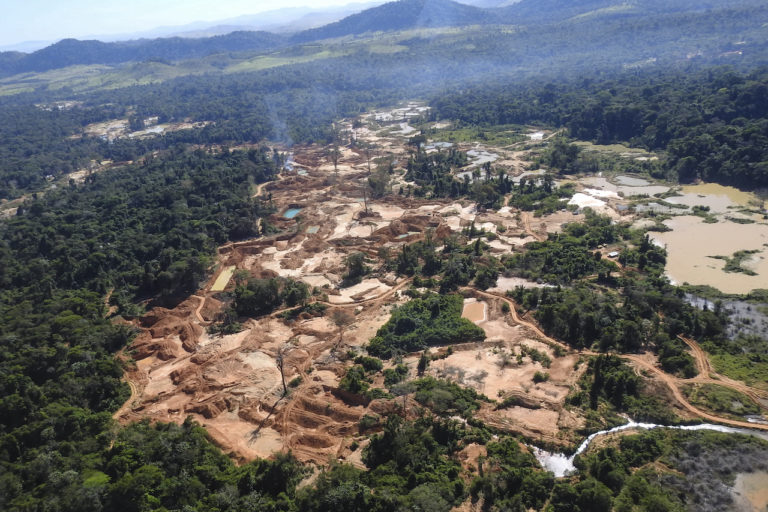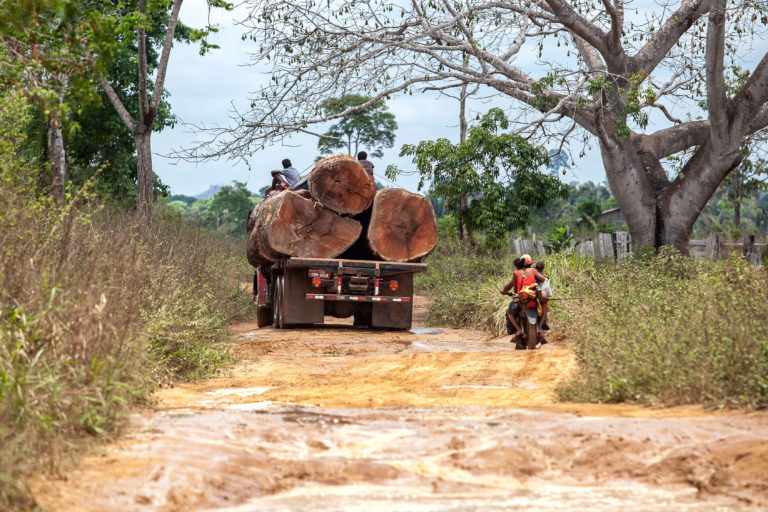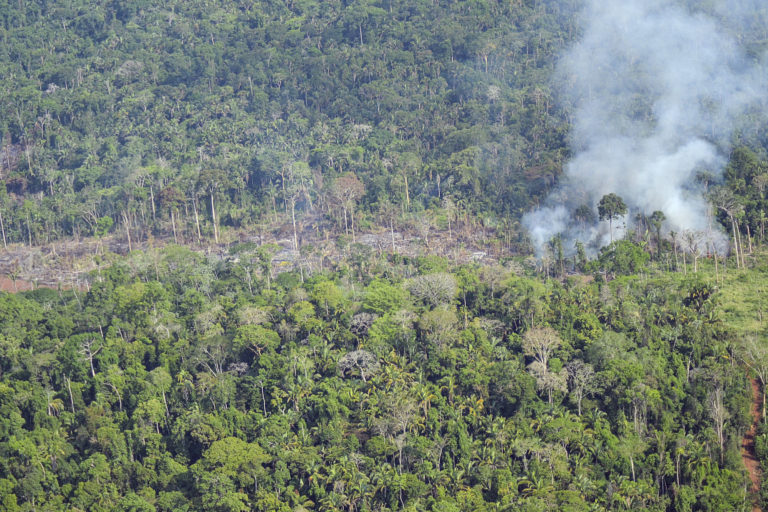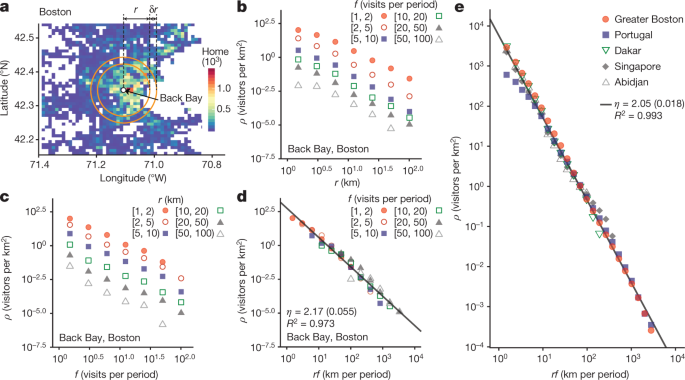Brazil’s Xingu River basin feels the heat of Bolsonaro’s fiery rhetoric

- An area six times the size of New York City was destroyed by loggers, land grabbers and illegal miners from 2018 to 2020 in the basin straddling the states of Pará and Mato Grosso.
- A green corridor of indigenous reserves and conservation units is at risk of being cut in half, with land grabbers advancing on both sides from municipalities with high levels of deforestation.
- Experts say the dramatic increase in destruction reflects a widespread sense of impunity in the region, fueled by President Jair Bolsonaro’s anti-indigenous and anti-environmental rhetoric.
- The suspension of environmental inspections has led to a notable increase in deforestation in the Brazilian Amazon; the number of fines imposed for environmental crimes fell by 34% in the first year of the Bolsonaro administration.
The Xingu Basin, one of the most biodiverse regions of the Brazilian Amazon, is reeling from an explosion of illegal deforestation that has coincided with the rise and presidency of far-right populist Jair Bolsonaro.
According to a recent report by Xingu + network, based on its Sirad deforestation monitoring system, between 2018 and 2020, loggers, land grabbers and illegal miners destroyed 513,500 hectares (1.27 million acres) of forest – an area six times bigger than New York. Sirad is a near real-time radar monitoring system for deforestation using a series of algorithms that process information from the Sentinel-1 satellite on the Google Earth Engine (GEE) platform, monitored by analysts from the Xingu + network.
Experts have detected what they say is an alarming increase in deforestation inside the 23 indigenous reserves and nine protected forest areas that form a “green corridor” along the basin that straddles the states of Pará and Mato. Grosso; the first houses most of the recent destruction.
While much of the illegal activity inside these protected areas predates the Bolsonaro era – illegal logging and mining inside the indigenous reserves of Cachoeira Seca and Kayapó, for example – Experts interviewed by Mongabay said the sudden escalation from 2018 demonstrates a sharp increase in the sense of impunity in the region.
“The increase in deforestation inside these protected areas clearly reflects the hope that they can be reduced or canceled,” said Biviany Rojas, Xingu program coordinator in Brazil. Socio-environmental institute (ISA). One of the main concerns highlighted in the report is that the Xingu Basin Corridor could be severed in half.
‘There are no rules’
Deforestation has increased in the Iriri State Forest, with land grabbers illegally invading both sides of São Félix do Xingu, the Brazilian municipality that is home to the most cattle – 2.2 million, according to the latest. figures from the Institute of Geography and Statistics of Brazil – and Novo Progresso, from the BR-163 highway, site of the infamous “fire day. “
These two deforestation fronts are now less than 50 kilometers (30 miles) apart. “If that happens, the corridor will be cut in half,” said Ricardo Abad, geoprocessing analyst at ISA. “It would be breaking an ecological corridor which is very important for the region – and the planet.”
According to the report, in 2012, six years after the establishment of the Iriri State Forest, 39 properties were registered in the area with the Rural Environmental Registry (RCA) of Brazil, covering 57,254 hectares (141,478 acres) of land. This represented more than an eighth of the total area of the ostensibly protected park.
Today, there are 201 properties illegally claimed and registered with the CAR in the Iriri State Forest, covering 396,882 hectares (980,717 acres) of land, an area almost half the size of Porto. Rico and covering 90% of the territory.
The Triunfo do Xingu Environmental Protection Area (APA), which borders the Iriri State Forest, remains the most affected conservation unit in the basin, with 93,276 hectares (230,490 acres) of forest and native vegetation destroyed from 2018 to 2020.
According to the report, the extent of deforestation recorded inside the conservation unit, with areas as large as 1,400 hectares (3,460 acres) cleared at a time, illustrates the economic and political power and capacity of the groups. responsible.

Almost 40% of the forest cover in the conservation unit has already been cleared, mainly for cattle ranching. While the reserve’s status allows for economic activities, analysts say the lack of sustainable production planning and a decline in inspections means deforestation has continued at an intense pace.
“It’s like there are no rules,” said Abad, the geoprocessing analyst.
In total, from 2018 to 2020, some 120,000 hectares (297,000 acres) of deforestation were detected in conservation units in the Xingu Basin, while 66,000 hectares (163,000 acres) of deforestation were detected in indigenous reserves in the region. .
In 2019, the first year of Bolsonaro’s presidency, there was a 38% increase in deforestation in indigenous reserves and a 50% increase in basin conservation units.
Since starting his campaign in 2018 and throughout his presidency, Bolsonaro has frequently denounced what he sees as an excessive amount of land in the Brazilian Amazon allocated to indigenous reserves or forest protected areas.
He accuses this situation of stifling the growth of the agri-food sector, despite the fact that protected areas in Brazil represent 29% of the total territory of the country, against 37% for agriculture, according to data from the Brazilian NGO MapBiomas.
“Here in Rondônia there are 53 conservation units and 25 indigenous lands,” Bolsonaro said during a campaign stop in 2018 in Porto Velho, capital of Rondônia, one of the most deforested states in the country. Amazonia and a stronghold of its support base. “It’s ridiculous what is being done in Brazil, in the name of the environment.”

The start of his presidency in January 2019 also ushered in legislation calling for amnesty for land grabbers and the legalization of illegal mining in indigenous reserves, while removing restrictions on Amazon timber exports.
Meanwhile, agencies like IBAMA, the federal environmental protection agency, have suffered from budget cuts, layoffs of senior officials and intimidation, affecting their abilities to carry out complex operations to dismantle organized criminal networks. in the Amazon and the Xingu region, said ISA’s Rojas.
“The figures show that when these operations are suspended, there is an immediate effect of increased deforestation,” she said, citing examples in the Xingu region.
In April last year, IBAMA’s environmental protection director and two law enforcement coordinators were fired and operations suspended in the Xingu region after a video was released. showing illegal mining equipment in destroyed native reserves on prime-time newscast. Fantastic.
Until then, law enforcement operations had succeeded in lowering rates of deforestation. But they leapt again from that point to the indigenous reserves of Cachoeira Seca, Trincheira Bacajá and Apyterewa in the Xingu region.
Despite the trend, there have been signs of a pullback against deforestation. IBAMA recently fined 106 million reais (nearly $ 20 million) on a man accused of leading a gang responsible for land grabbing inside the indigenous territory of Ituna / Itatá and d ‘causing 21,000 hectares (51,900 acres) of deforestation since 2018. And earlier this month, Federal Police raided properties linked to Bolsonaro’s Environment Minister Ricardo Salles as part of a investigation of illegal logging.
Banner Image: Illegal mining at the northeastern edge of the Kayapó indigenous territory in the state of Pará. Image courtesy of Xingu + Network.
Source link






